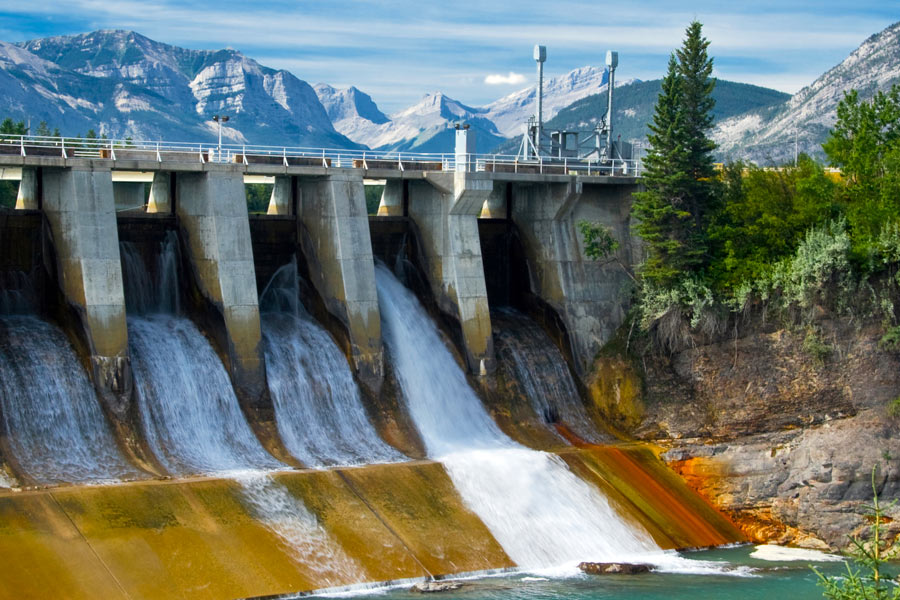This article was submitted to The Hill Times on December 11, 2019. It is written by Carlos Murillo, Senior Research Associate at the Conference Board of Canada.
With governments, businesses, and consumers increasingly acting to reduce greenhouse gas (GHG) emissions and limit the severe impacts of climate change, there is a clear opportunity to move towards an economic model that balances the goals of environmental protection, wealth creation, and a prosperous society—i.e., a sustainable development future. Canada’s natural resources sector has an important role to play in that future—not only at home, but also abroad.
As this edition goes to press, multilateral negotiations are taking place at the United Nations Climate Change Conference COP 25 in Madrid, where countries are expected to agree on the implementation details of the 2015 Paris Climate Change Agreement. This follows the UN’s Climate Action Summit earlier this Fall in New York, where 65 jurisdictions committed to a target of net-zero GHG emissions by 2050; 70 countries announced a ramp up in their emissions mitigation efforts, and; over 100 business leaders committed to concrete alignment with the Paris Agreement and a transition to a green economy.
Closer to home, the recently re-elected federal Liberals campaigned on a platform of greater ambition beyond their existing climate policy package (the Pan-Canadian Framework)—including a 2050 net-zero emissions target for the country. Clearly, global momentum is building on ambitious climate action for the coming decades, including in Canada.
Transformational changes to the global energy system are coming with a future market opportunity that is significant. Canada’s natural resources sector can play a prominent role in this transition to a sustainable development future—not only at home, but also globally.
So where is change likely to happen? Globally, energy-related emissions account for three-quarters of all GHG emissions, making them a key target for mitigation efforts. Meanwhile, fossil fuels (including coal, oil, and natural gas) accounted for over 80 per cent of all the energy used worldwide last year—a share that has hardly nudged in the last couple of decades. For Canada, the respective shares are somewhat similar. So, the path to global and domestic emissions reductions is clear: an overhaul of the energy system is needed—i.e., all energy production, processing, transformation, and end-use activities.
How big a change is needed, and what impact it can have on Canada’s natural resources sector is the key question. To understand the magnitude of the change, consider the latest (Nov. 2019) findings from the International Energy Agency’s (IEA) World Energy Outlook. Under their Sustainable Development Scenario—one consistent with the emissions-reduction trajectory of the Paris Agreement—the following changes on the global energy system are required by 2040:
- Energy demand plateaus around 2020 and declines at a slow and steady pace after.
- The share of fossil fuels in the energy-mix declines to 58 per cent (from 81 per cent in 2018). Consequently, the share of clean energy sources (i.e., bioenergy, hydro, non-hydro renewables (e.g., solar, wind) and nuclear) more than doubles from today’s levels.
- Relative to recent years (2014–18) energy investment levels increase by close to 60 per cent on an annual average basis (2019-40), totaling over U.S.$71 trillion cumulatively.
- Energy supply investment levels increase moderately, but there’s a distinct shift form fossil fuels to clean energy. End-use investment levels (including on energy efficiency) increase three-fold and account for a much larger share of total energy investments.
- There is no silver-bullet for reducing energy-related GHG emission globally. Changes across all segments of the energy system are needed in three main areas: energy efficiency; renewables, and; “others” such as fuel-switching efforts, behavioral change, adoption of carbon capture, utilization and storage (CCUS) technologies, etc.
This scenario presents clear opportunities for Canada’s natural resource sector. For example, although the global pie of fossil fuels demand (and investments) is expected to shrink, Canada’s producers can expand their market share—provided they are positioned to compete as low-cost, low-carbon, and reliable suppliers. What is more, the expertise and know-how of Canada’s natural resources companies on environmental stewardship and disruptive fossil-fuel technologies (including CCUS) can be exported as services and intellectual property that would help reduce environmental impacts of fossil fuels production and use globally.
For other industries such as forestry and mining, a sustainable development scenario generally means greater demand for their products—whether in the form of wooden buildings, minerals and materials needed for manufacturing batteries for electric vehicles and wind turbines, or fuel supplies for nuclear power generation. Along this line of thought, the opportunities are also clear for Canadian manufacturers and exporters of clean energy technologies as well as for energy-efficiency and other service and construction industries.
One thing is clear, the world is increasingly moving forward on more concrete actions to reduce global GHG emissions. This means transformational changes to the global energy system are coming, with an “all of the above” approach needed, and a future market opportunity that is significant. Canada’s natural resources sector can play a prominent role in this transition to a sustainable development future—not only at home, but also globally. To capitalize on this opportunity, Canada’s policymakers and sector leaders must act swiftly, work collaboratively, and have a long-term strategic vision. This way the sector can continue to contribute positively to the economy, the environment, and communities across the country for decades to come.



Comments